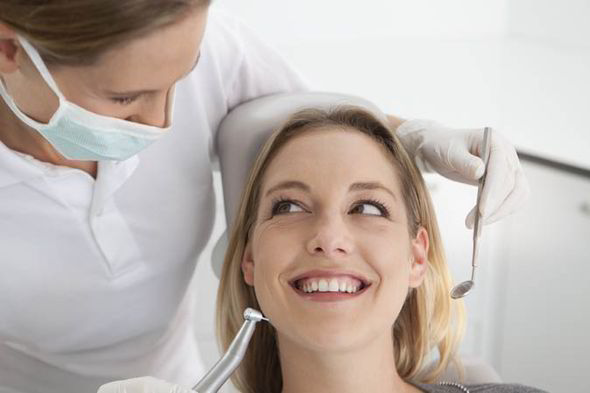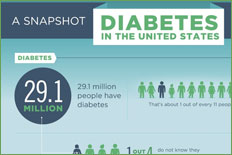Health Centers > Diabetes Center > Hypoglycemia
Hypoglycemia
Hypoglycemia is a condition characterized by an abnormally low level of blood sugar (glucose), your body's main energy source.
Hypoglycemia
Introduction
Physiology
Pathophysiology
L Clinical Manifestations
Causes
Clinical and Laboratory Diagnosis
Treatment
L Fasting Hypoglycemia
When to Refer
Bibliography
Hypoglycemia, also called low blood sugar, occurs when your blood glucose (blood sugar) level drops too low to provide enough energy for your body's activities. In adults or children older than 10 years, hypoglycemia is uncommon except as a side effect of diabetes treatment, but it can result from other medications or diseases, hormone or enzyme deficiencies, or tumors.
Hypoglycemia is commonly associated with diabetes. However, a wide variety of conditions, many of them rare, can cause low blood sugar in people without diabetes. Like fever, hypoglycemia isn't a disease itself, it's an indicator of a health problem.
Glucose, a form of sugar, is an important fuel for your body. Carbohydrates are the main dietary sources of glucose. Rice, potatoes, bread, tortillas, cereal, milk, fruit, and sweets are all carbohydrate-rich foods.
After a meal, glucose molecules are absorbed into your bloodstream and carried to the cells, where they are used for energy. Insulin, a hormone produced by your pancreas, helps glucose enter cells. If you take in more glucose than your body needs at the time, your body stores the extra glucose in your liver and muscles in a form called glycogen. Your body can use the stored glucose whenever it is needed for energy between meals. Extra glucose can also be converted to fat and stored in fat cells.
Hypoglycemia of Infancy and Childhood
Normal Glucose Homeostasis
Glucose Requirements of Infants and Children
Hepatic Glycogenolysis and Gluconeogenesis
Hypoglycemic Syndromes
L Introduction
L Neonatal Hypoglycemia
Hypoglycemia of Infancy and Childhood
Diagnostic Evaluation of Hypoglycemia
Physiology
Certain human tissues such as the brain have an obligate requirement for glucose; even brief glucose deprivation causes severe cerebral dysfunction. Other tissues, such as muscle, fat, and liver, utilize glucose when it is plentiful (e.g., after a carbohydrate-containing meal) but can utilize other metabolic fuels. The glucose taken up by these tissues may be metabolized or stored in the form of glycogen.
In view of the obligate glucose requirements of the central nervous system, prevention of a low plasma glucose concentration (hypoglycemia) is critical to survival. Normally the plasma glucose concentration is maintained within narrow limits by a tightly regulated balance between glucose efflux from and influx into the circulation. Moreover, entry of glucose from ingested carbohydrate normally is intermittent; the postprandial period is a state of enhanced glucose metabolism and storage and suppressed endogenous glucose production.
The Hypoglycemic States
Spontaneous hypoglycemia in adults is of two principal types: fasting and postprandial. Symptoms begin ...
In contrast, the postabsorptive period is a state of partially suppressed glucose utilization and enhanced glucose production. The latter is the result of the breakdown of glycogen (glycogenolysis) and the formation of new glucose (gluconeogenesis). Under most circumstances the liver is the predominant source of endogenous glucose production, although the kidneys become a major source of glucose during prolonged fasting. After an overnight fast most endogenous glucose production is from glycogenolysis, but after approximately 24 hours of fasting virtually all the glucose produced is by gluconeogenesis.
The prevention of hypoglycemia between meals requires (1) a structurally and enzymatically intact liver; (2) adequate hepatic glycogen stores and an adequate supply of gluconeogenic precursors (lactate, pyruvate, glycerol, and gluconeogenic amino acids such as alanine); and (3) appropriate regulatory signals.
THE HYPOGLYCEMIC STATES
Introduction
Differential Diagnosis
Hypoglycemia due to Pancreatic B cell tumors
L Introduction
L General Considerations
L Clinical Findings
L Treatment
L Prognosis
Persistent Islet Hyperplasia
Hypoglycemia Due to Extrapancreatic Tumors
Postprandial Hypoglycemia (Reactive Hypoglycemia)
L Postgastrectomy Alimentary Hypoglycemia
L Functional Alimentary Hypoglycemia
L Late Hypoglycemia (Occult Diabetes)
Alcohol-Related Hypoglycemia
L Fasting Hypoglycemia after Ethanol
L Postethanol Reactive Hypoglycemia
Factitious Hypoglycemia
Immunopathologic Hypoglycemia
Drug-Induced Hypoglycemia
The major regulatory signals involved in transition between the fed and the fasted state are insulin and glucagon. Insulin, secreted from pancreatic beta cells into the portal circulation in response to a meal, suppresses hepatic glucose production and stimulates glucose utilization by insulin-sensitive tissues. Glucagon stimulates hepatic glucose production by both glycogenolysis and gluconeogenesis. Its secretion from pancreatic alpha cells is suppressed after a carbohydrate meal, which favors glucose conservation. In the postabsorptive state, insulin secretion is suppressed and glucagon secretion increases. This combination of low insulin and high glucagon hormonal signals results in accelerated hepatic glucose production and diminished glucose utilization. In addition to glucagon, the hormones epinephrine, cortisol, and growth hormone also promote glucose production and limit glucose utilization. Glucagon, epinephrine, cortisol, and growth hormone are often referred to as glucose counterregulatory hormones.
Physiologic studies have shown that the following principles govern glucose counterregulation and the prevention or correction of hypoglycemia:
- Decreased insulin secretion plays an important role in prevention or correction of hypoglycemia. However, glucose counterregulation is not due solely to dissipation of insulin but rather to coordinated dissipation of insulin and activation of redundant glucose counterregulatory systems.
- Glucagon plays a primary counterregulatory role.
- Epinephrine is not normally required for glucose counterregulation but compensates to a large degree when glucagon secretion is deficient (e.g., during insulin-induced hypoglycemia in type I diabetes mellitus). Hypoglycemia occurs or progresses only when both glucagon and epinephrine are deficient and insulin is present, or when insulin action is excessive.
- Cortisol and growth hormone are not critical to correction of hypoglycemia or to prevention of hypoglycemia after an overnight fast. Nevertheless, patients with chronic deficiencies of these hormones occasionally develop fasting hypoglycemia.
- Although other hormones, neural mechanisms, or glucose autoregulation may be involved in counterregulation, they are not sufficiently potent to prevent or correct hypoglycemia when both glucagon and epinephrine are deficient and insulin is present.
The glycemic threshold for suppression of insulin secretion in response to declining plasma glucose level lies well within the physiologic range for plasma glucose. In keeping with their role in prevention as well as correction of hypoglycemia, the glycemic thresholds for release of counterregulatory hormones lie just below the physiologic plasma glucose range and well above the threshold for symptoms of hypoglycemia.


